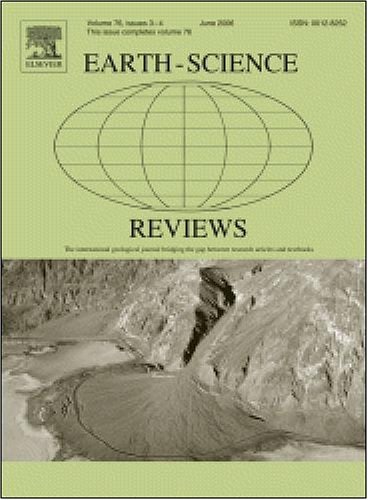Soil Taxonomy adapted to buried paleosols: First approximation
IF 10
1区 地球科学
Q1 GEOSCIENCES, MULTIDISCIPLINARY
引用次数: 0
Abstract
Buried paleosols are important reservoirs of paleoenvironmental information, yet there is no unified system to taxonomicallyclassify them on geological timescales. Here we present the first approximation of a soil-paleosol taxonomy modified from properties in the Soil Taxonomy thatcan be reasonably and reliably described, measured, and interpreted. The rationale for this approach follows theconcept of uniformitarianism that the twelve soil orders recognized in Soil Taxonomy were present during the Phanerozoic. The diagnostic information required for application of the soil-paleosol taxonomy is obtained from field descriptions, bulk geochemical assays, and petrographic thin sections. The key to the soil-paleosol taxonomy is evaluated in the same sequence as soils in the Soil Taxonomy, and are: paleo-Gelisols (permafrost) > paleo-Histosols (organic materials) > paleo-Spodosols (illuvial organics, sesquioxides) > paleo-Andisols (volcanic glass, phosphorus retention), paleo-Oxisols (residual sesquioxides) > paleo-Vertisols (shrink-swellclays) > paleo-Aridisols (aridic soil moisture regime) > Paleo-Ultisols (low fertility, illuvialclays) > paleo-Mollisols (high fertility, surface horizon) > paleo-Alfisols (high fertility, illuvialclays) > paleo-Inceptisols (incipient subsoil) > paleo-Entisols (surface horizon). The paleopedologist will ultimately determine when diagenetic alterations prevent application of the soil-paleosol taxonomy. However, diagnosticcriteria were successfully evaluated against some 30 paleosols reported in the literature that had been minimally altered by diagenesis. Nearly one-half of those paleosols were misclassified, significantly altering the original interpretation of associated environmentalconditions. The soil-paleosol taxonomy for paleosols will enhance our understanding of the soil forming factors, lead to the development of new analytical tools, promote stratigraphiccorrelation both spatially and temporally, andcontribute to the development of acomprehensive database.
适应于埋藏古土壤的土壤分类:初步近似
埋藏古土壤是古环境信息的重要储集层,但在地质时间尺度上尚无统一的分类体系。在这里,我们提出了第一个近似的土壤-古土壤分类修改土壤分类的性质,可以合理和可靠地描述,测量和解释。这种方法的基本原理遵循均变论的概念,即土壤分类学中所承认的12个土壤阶在显生宙期间存在。应用土壤-古土壤分类学所需的诊断信息可从野外描述、大量地球化学分析和岩石薄片中获得。土壤-古土壤分类的关键与土壤分类中的土壤顺序相同,分别是:古冻土;古组织有机质(有机物)>;古spodosols(土壤有机质,倍半氧化物)>;古andiols(火山玻璃,磷滞留),古oxisols(残留的倍半氧化物)>;古膨缩粘土>;古干旱区(干旱区土壤水分状况)>;古多土(低肥力,光照);古mollisol(高肥力,表层)>;古alfisols(高生育力,光照)>;古初始底土>;古隐层(地表水平)。古土壤学家将最终确定成岩变化何时妨碍土壤-古土壤分类学的应用。然而,诊断标准成功地评估了文献中报道的30个古土壤,这些古土壤被成岩作用改变得最小。这些古土壤中有近一半被错误分类,极大地改变了对相关环境条件的原始解释。古土壤的土壤-古土壤分类将有助于我们对土壤形成因素的认识,促进新的分析工具的发展,促进地层在空间和时间上的对比,并有助于建立综合数据库。
本文章由计算机程序翻译,如有差异,请以英文原文为准。
求助全文
约1分钟内获得全文
求助全文
来源期刊

Earth-Science Reviews
地学-地球科学综合
CiteScore
21.70
自引率
5.80%
发文量
294
审稿时长
15.1 weeks
期刊介绍:
Covering a much wider field than the usual specialist journals, Earth Science Reviews publishes review articles dealing with all aspects of Earth Sciences, and is an important vehicle for allowing readers to see their particular interest related to the Earth Sciences as a whole.
 求助内容:
求助内容: 应助结果提醒方式:
应助结果提醒方式:


